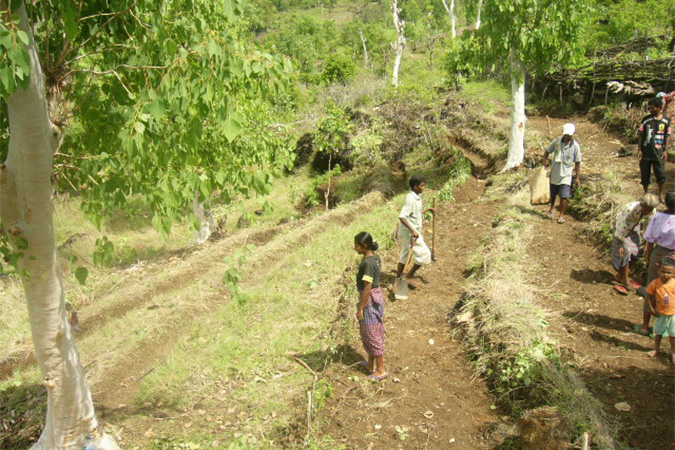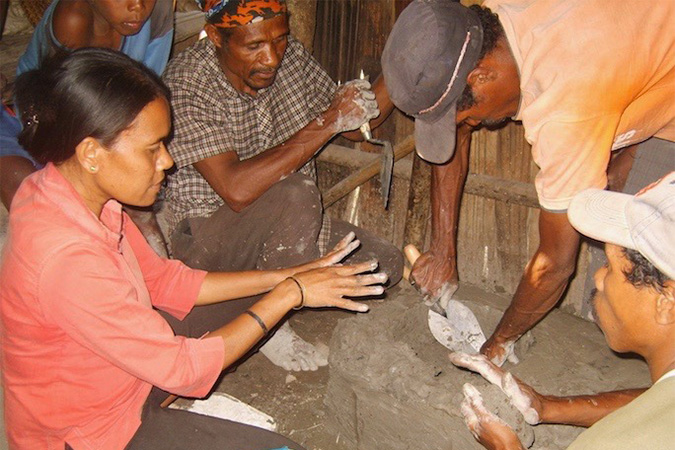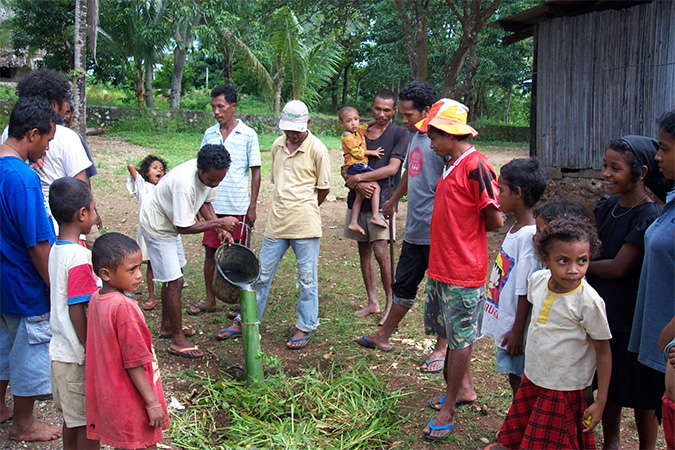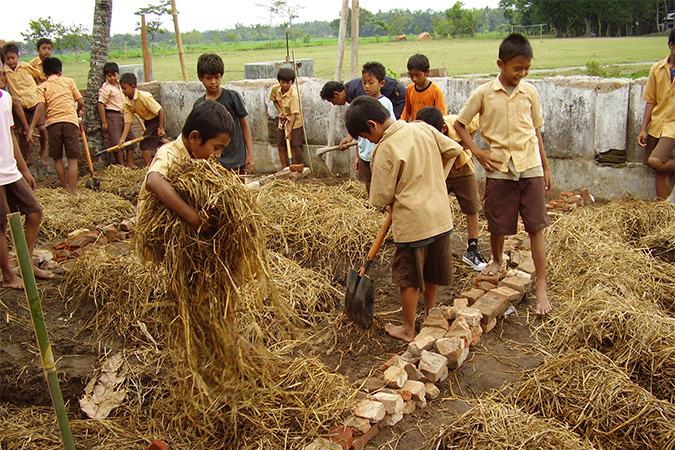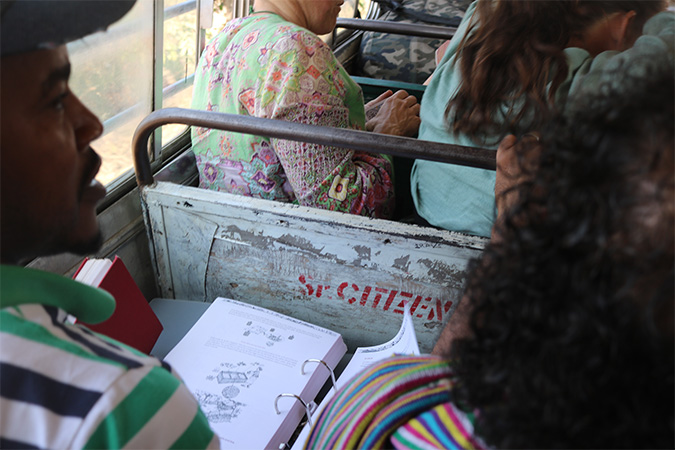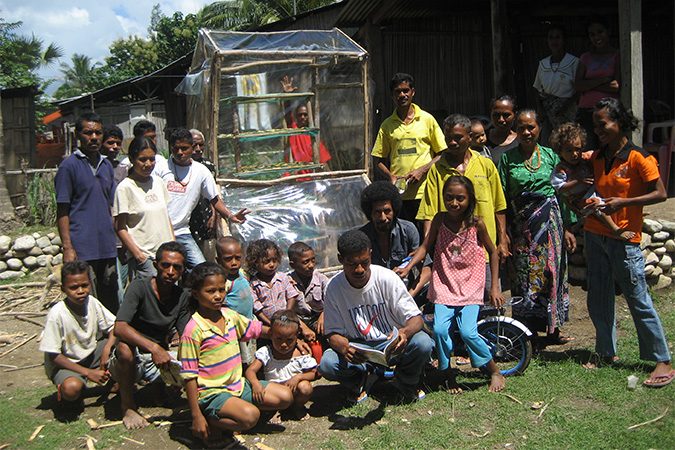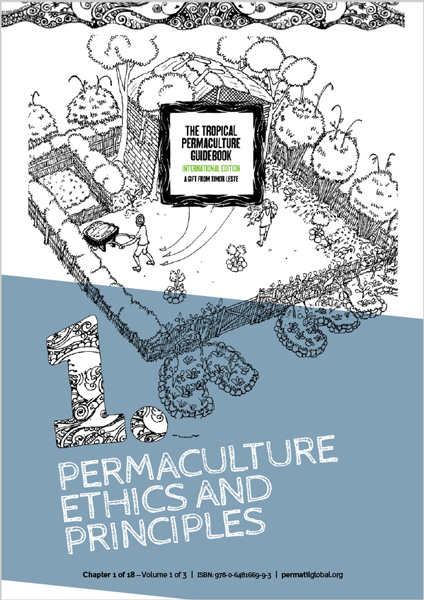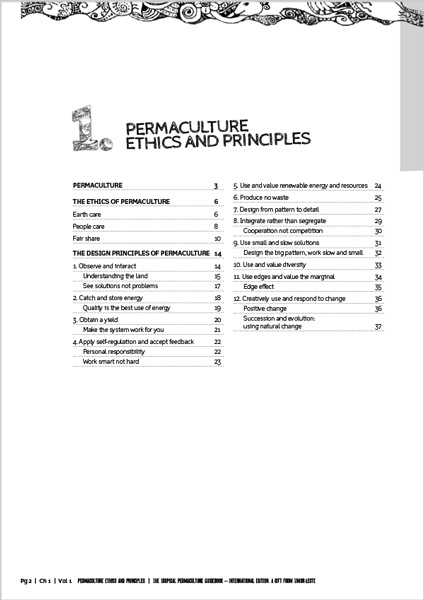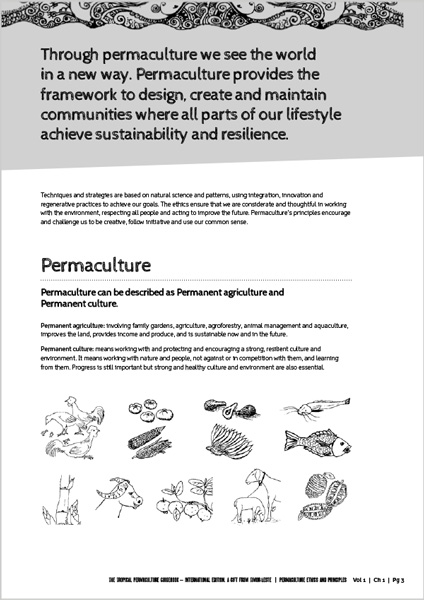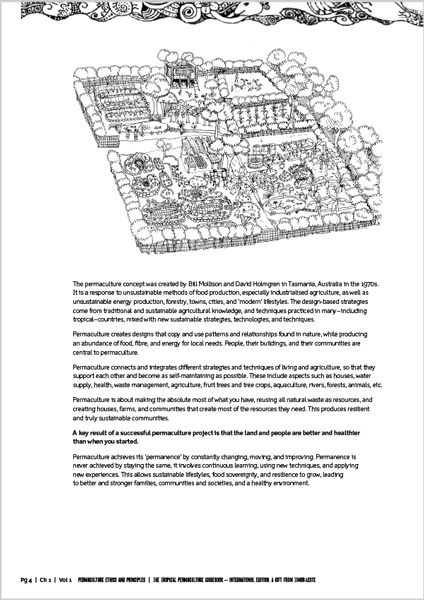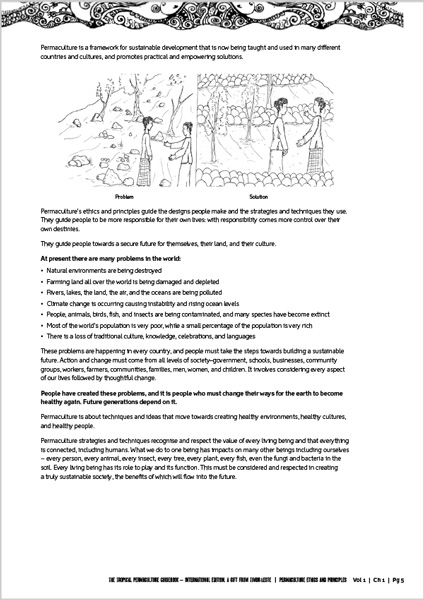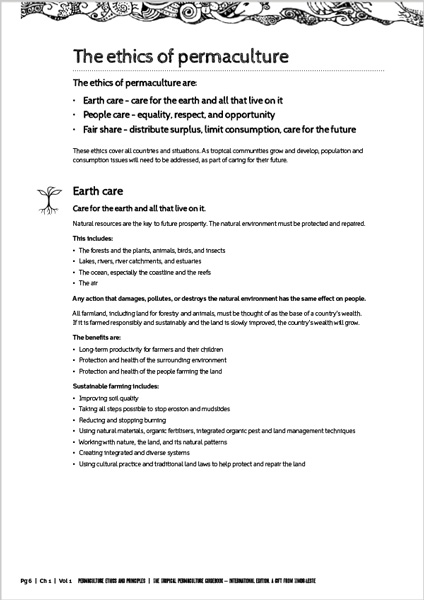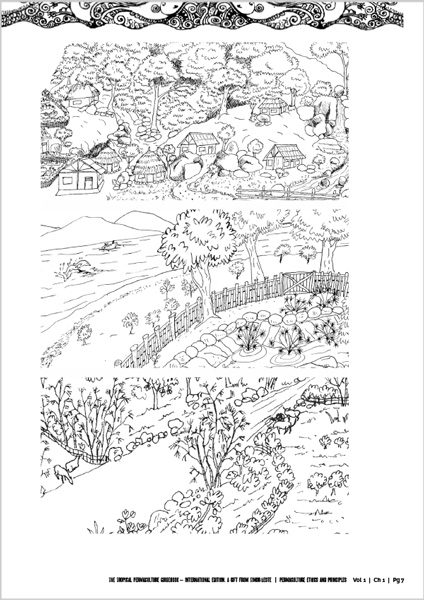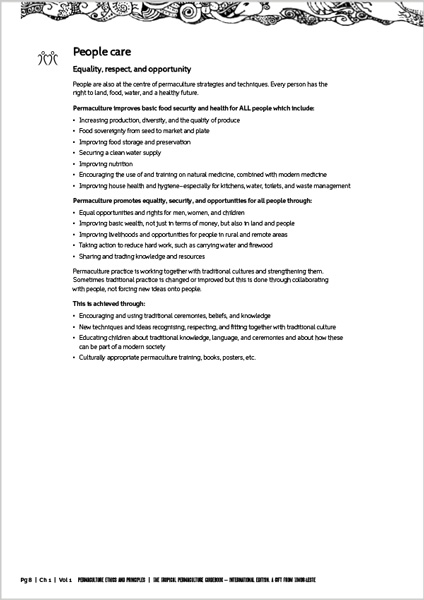How to use the book
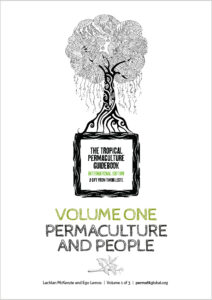
Volume One: Permaculture and People
This volume, in Chapters 1, 2 and 3, explains permaculture and provides the information to design systems and choose the appropriate techniques. They are the foundation for the rest of the guidebook. Chapters 4, 5 and 6 connect permaculture to people and communities, including training, livelihoods, economies, urban ideas and community resilience.
- Ch 1 Permaculture ethics and principles
- Ch 2 Natural patterns
- Ch 3 Design strategies and techniques
- Ch 4 Urban and community permaculture
- Ch 5 Cooperatives
- Ch 6 Trainers guide
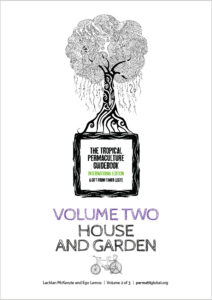
Volume Two: House and Gardens
Volume Two includes information that directly relates to families, family houses and family garden production. It also links these ideas to community-scale techniques. Chapters 9, 11 and 12 are foundation chapters for many chapters in Volume Three.
- Ch 7 Houses, water and energy
- Ch 8 Food, health and nutrition
- Ch 9 Soils
- Ch 10 Family gardens
- Ch 11 Seeds and propagation
- Ch 12 Plant nurseries
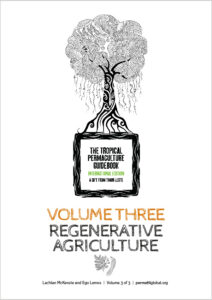
Volume Three: Regenerative Agriculture
This volume is called Regenerative Agriculture because the techniques and strategies continuously improve the land, production and environment over time. The chapters explore different parts of tropical agriculture and describes practical steps for achieving good results. In Volume Three chapters, such as Ch 14 Integrated pest management (IPM) and Ch 17 Animals, are also important for referencing and linking with Volume Two.
- Ch 13 Sustainable agriculture
- Ch 14 Integrated pest management (IPM)
- Ch 15 Trees
- Ch 16 Bamboo
- Ch 17 Animals
- Ch 18 Aquaculture
The chapters are also integrated with each other, reflected by the content and reference points within the chapters.
Introductions
Each introduction contains its own foreword, welcomes the reader and explains about the guidebook and its purpose. It lays out the challenges we face environmentally and as a society, and the tools we have to build solutions to those challenges. Tips for how to access the information are also included.
Glossary
The glossary contains clear explanations of key words that are used in the book, which are important to understanding the concepts and techniques. Included are words that might be unfamiliar to some readers, especially those readers that are new to permaculture.
References
The reference section is the vital ‘next step’ for guidebook users. We list a large range of websites providing information that follows on from the guidebook and explain many strategies, techniques and concepts in greater detail.There is a list of general websites as well as a list of websites linked to each chapter for further research. As with the guidebook we have only chosen websites which are practical and provide clear easy-to-follow information. In the reference section we have also included all the fantastic books used for researching and checking information for the guidebook.
Here’s a sample of the content
